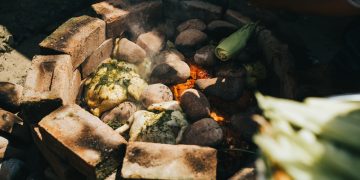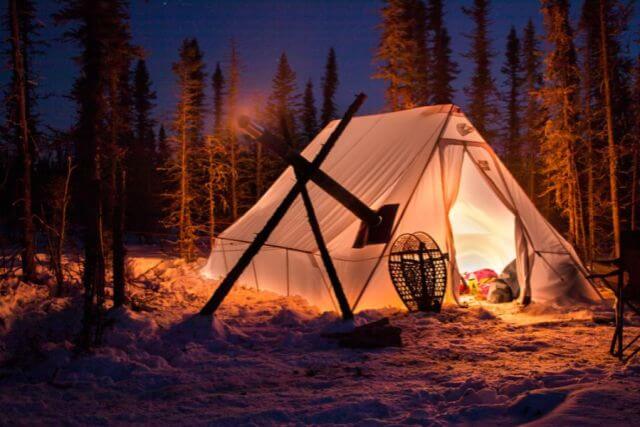Camping can be a liberating experience, but preparation may be a daunting task for beginner campers. With numerous guides and experts talking about how to camp the right way, you might be wondering which one to follow. We have compiled a list of essential tips and advice to help you start packing for your next trip.
What to pack
A first-time camper may be apprehensive about packing for their first outdoor experience. Here are some essentials to help you get started:
- Make a gear list.
- Pack plenty of warm clothes, including clean, dry layers to help you sleep in.
- Wear synthetic or merino wool base layers instead of cotton. The material makes it an ideal choice for damp conditions.
- Waterproof boots have soles with solid traction for easy trekking through snowy trails.
- Hand and toe warmers are a must to keep your extremities warm.
Make a Checklist
Imagine reaching the campsite that you have been looking forward to all weekend only to find out you have forgotten the sleeping bags or, worse, batteries. To avoid being victim to such unsavory circumstances, it is better to be prepared. The best camper is one who has pre-planned every detail before pitching their tent.
Visit https://www.outdoorfilming.com/ for more in-depth information and valuable guidance on camping.
The ideal way to organize all the essentials you need is to make a checklist. Then tick off items as you pack and upgrade changes as you see fit.
Essential Cold-Weather Camping Gear Checklist
Below is a comprehensive list with tips for your perfect winter camping inventory.
Tent
You may choose to forego this for other seasons, but a tent is an indispensable part of your gear inventory for winter camping. Remember the following factors when selecting your tent :
If you aren’t anticipating stormy weather or camping below treeline, a typical 3-season backpacking tent is enough.
On the other hand, high winds and heavy snowfalls call for a 4-season tent with sturdy poles and rich fabrics to withstand powerful gusts of wind and heavy snowfalls.
Some extra space will let you rest comfortably as well as stow gear from the snow. Get a tent with room for one more person than sleeping(e.g., a 3-person tent for two people.)
Backpack
The extra gear and warmer, bulkier clothing require a larger pack during winter than in the summertime. Here is a rough estimate for a 2- to a 4-day trip:
- Lightweight: minimum 65-liter (3,967 cubic inch) pack.
- Deluxe: minimum 80-liter (4,882 cubic inch) pack.
Make sure to fasten your pack to secure these large items.
Sleeping Bag
A bag rated at least 10 °F lower than the expected coldest temperature is an ideal choice. Vent the bag if it gets too warm.
Consider these factors when buying bags:
- The bag should have generous amounts of goose-down or synthetic insulation.
- Ensure the bag has draft tubes and draft collars with a sleeping bag liner for up to 5 – 25 °F of warmth.
Sleeping Pads
Remember to use two pads for better insulation and cushioning. One self-inflating pad and another, a closed-cell foam pad to protect against the cold ground. Get pads with an R-value, which measures insulation, of 4 or higher.
Backpacking stoves
Liquid-fuel stoves and some canister stoves are good options for winter camping. A backup stove in case of emergencies is a wise choice. You should also carry extra fuel, given that the higher you go up, the more fuel you will burn. Set your fuel canister in water to prevent freezing.
Other Amenities
It is essential to familiarize yourself with the terrain you wish to hike, determining your travel gear. For example, areas with thick snow beds call for snowshoes to trek uphill. Both skis and snowboards can be used for traveling downhill. In addition, sleds can be used for long trips and help you carry extra gear. However, they aren’t suitable for steep slopes and narrow trails.
Avalanche Safety Equipment
It is best to go prepared if you are traversing dangerous terrain like an avalanche-prone area. Take Avalanche Awareness Class, check the forecast, and avoid avalanche terrain. This includes an avalanche transceiver, probe, and shovel. An avalanche transceiver exchanges signals which help locate victims. On the other hand, probes and shovels can help dig out victims, dig snow shelters, or melt snow for drinking water.
Become Familiar With Your Gear
To avoid the embarrassing situation of fumbling with your tent, practice using your gear before the big day. Check the lanterns and stoves, as well as try the sleeping bags.
Campsite Essentials
Here are some tips for first-time campers:
Arrive Early
This will allow you to get familiar with the camp layout and set up camp when there is still daylight.
Observe Campground Rules
Maintaining privacy means that you should respect the space of other campers and observe quiet hours.
Secure Your Campsite and Flatten Your Sleeping Surface
This will protect you against the strong winds and sleep comfortably for the night.
Tent Camping on High-Wind Nights
Camp in open ground in a space clear of fallen branches and logs. It is better to camp with a friend in unruly weather. Your tent should be sturdy, appropriately fixed, and ensure that the narrow ends face the winds.
Remember to vent your tent and avoid cooking there to prevent frost formation.
Making a fire
The first step is to have sufficient starters like wood at your disposal; use a sled if needed. Dig a hole in the snow to prevent the fire from collapsing when the snow melts.
Hibernate Like a Bear
After all the fun trekking and exploring, rest is equally important. However, frostbite and hypothermia are real risks in winter camping. This is why staying warm is so significant.
Keeping sufficient warm clothing and spares are essential as there are no laundry facilities.
Warm up with a hot water bottle. Besides, light exercise can also help keep you warm.
Don’t breathe or burrow deep into your bag, as this causes heat loss.
Wear multiple layers when sleeping. Contrary to popular belief, sleeping naked in your sleeping bag doesn’t keep you warm.
Pee when needed; your body burns fuel to keep your urine warm.
Insulate your tent by reducing space.
Mealtime
The best part of your trip is the meals, here is how to prepare for them:
Plan your meals to prepare fresh food, not quick mart junk.
Munch on a high-calorie midnight snack for added warmth.
Prevent spills on your dry gear—try a reusable straw.
Insulate your water bottles, or your water will freeze into ice.
How To Prevent Cold Injuries
Cold injuries are one of the most significant risks of winter camping. Here are ways to avoid the worst-case scenario:
- Layer up to keep warm instead of relying on fire.
- Listen to your body, warm your fingers and toes with warmers or place your hand in your armpits. Don’t tough it out.
- Check up on your friends frequently for pale spots or lethargy. Take action immediately.
As mentioned previously, check weather conditions and be informed about hazards specific to your camping ground.
It is also vital to protect your electronics and gear in the cold weather. Well-insulated and padded waterproof cases are your best bet. Avoid keeping them in your car for a prolonged period instead of keeping them inside the tent.
Conclusion
First-time campers are better off camping near their home. This way, you can rectify your mistakes with no hazardous consequences. Camping is an adventure and a journey of self-discovery. To make this even more memorable and fruitful, going camping with a well-rounded plan that accommodates all areas is essential.






















































































